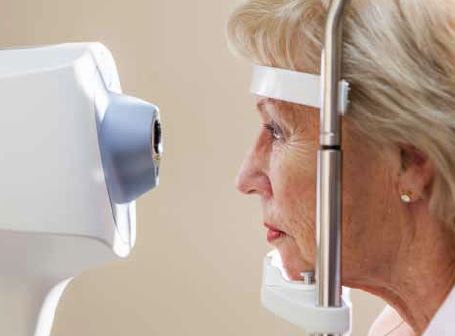Jan 12, 2017, 09:46
by
Dr. Brett Simon

Vision is a very important part of our daily lives that many of us take for granted. Simple daily tasks are taken from a person with visual impairment including reading the newspaper, watching television, seeing a person’s face and taking medications. With mild to moderate cases of vision loss, we can address these issues with specialized low vision devices. When the vision loss is too severe we have to rely on white canes, audible clocks, guide dogs and other non-visual aids.
“Normal” vision is commonly diagnosed when a person is 20/20. If you have 20/20 vision you can see clearly at a 20 foot distance as someone else with “normal” vision. If you have 20/200 vision, you have to remain 20 feet away from an object while a person with “normal” vision can be 200 feet away and see the same object.
A patient is diagnosed with visual impairment when they can no longer be corrected to 20/20 with glasses or contact lenses. Eye disease and trauma can cause a range of visual impairment from very mild loss, 20/30 to 20/60, to total blindness with the inability to perceive light. A common cause of vision loss is macular degeneration. This disease targets the central vision while the peripheral or side vision remains normal. There are congenital conditions that affect the central vision as well but can present at a much earlier age. In an attempt to improve activities of daily living for these conditions, magnification is key. For close activities we utilize high magnification reading glasses or hand held magnifiers. There are also magnifiers that stand on their own for sustained reading. If the central vision is severely affected a video magnifier can achieve up to 35x magnification. Though the pace of reading is often slow, it can allow someone to read a book, do a crossword puzzle, or see a photo. For briefly spotting something at a long distance, such as a house number, we can utilize small hand held devices that operate similar to a telescope. Sustained distance activities, such as watching a concert, movie, or play, can be addressed with glasses that work like binoculars.
Visual impairment can also be classified as a loss of peripheral vision while the central vision remains normal. Glaucoma causes the loss of peripheral vision while the central vision is the last to be affected. When glaucoma becomes severe the patient has to learn to scan with their eyes to avoid tripping over objects. This is where sweeping a white cane in front of them can prevent running into things. If diagnosed early we can slow the progression of glaucoma. Stroke and brain trauma can also cause the loss of peripheral vision. The visual field can potentially be expanded by as much as 20 degrees utilizing a special prism lens.
It is challenging to improve the loss of severe peripheral vision never mind loss with low vision devices, so we often work with the Braille Institute and occupational therapists to address lifestyle modifications.
Losing vision causes emotional stress and loss of dependence. With low vision aids the goal is to regain the ability to perform activities of daily living. Some patients do very well while others have limited success due to severe vision loss, poor manual dexterity, poor general health or lack of motivation. It is recommended to have regular eye exams, and physical exams, to detect these conditions in the early stages and prevent severe vision loss.

Brett Simon, OD has been a Sansum Clinic optometrist since 2012. He received his optometry degree from the Southern California College of Optometry in Fullerton, CA. Dr. Simon is certified by the State of California Board of Optometry and is affiliated with the California Optometry Association and the American Academy of Optometry.